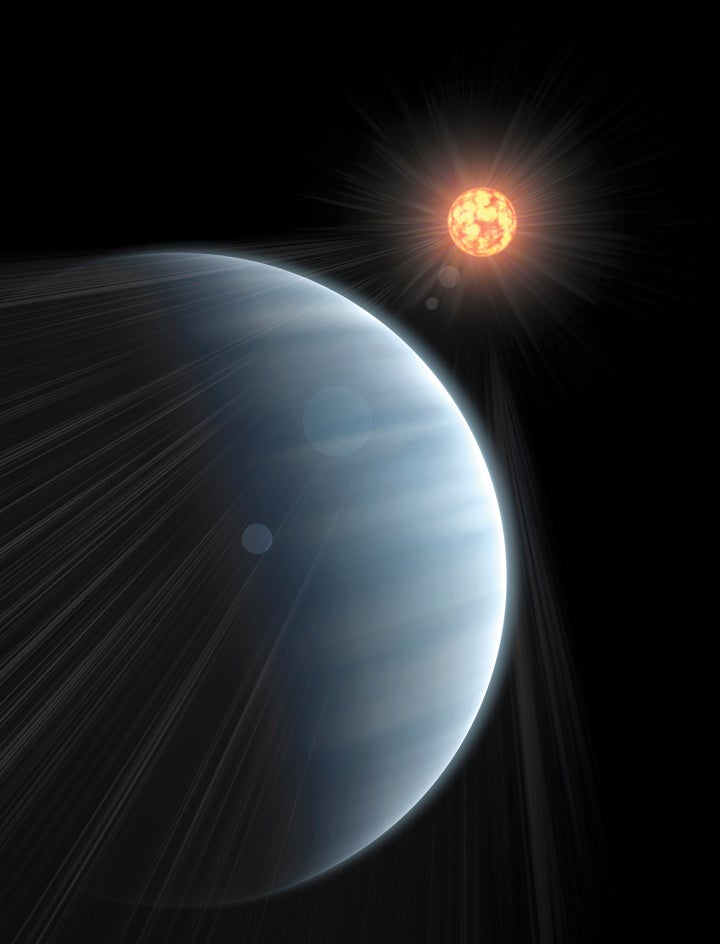
Fifty years ago this week, mankind took its first big step into space. On April 12, 1961, Russia's Yuri Gagarin spent one hour, 48 minutes orbiting the earth in Vostok 1. Just eight years later, a human stood on the Moon when Apollo 11 landed.
Gagarin died in an airplane crash in 1968, before I had a chance to meet him. But I did have the honor of interviewing John Glenn, America's answer to Gagarin. Ten months after Russia's feat, Glenn flew his own orbits in Friendship 7 and, in doing so, became a national hero. Following are edited excerpts from a longer chat with Glenn, 89, a retired senator (D-OH) and 1998 Shuttle veteran:
Jim Clash: Set up the historical context for your pivotal Mercury flight on Feb. 20, 1962.
John Glenn: What people forget is what prompted that flight. It was largely a part of the Cold War. The Soviets were claiming technical and research superiority to the U.S. They were bringing thousands of young people in from third world countries, giving them an education in Moscow, then sending them to other places in the Soviet Union and back to their homes again, almost as little communist emissaries. Their claims of technical superiority were borne out by the fact that they were launching things, while ours were too often blowing up on the pad. They, of course, orbited before we did. We thought we were going to be first into space with Al Shepard on a suborbital flight in 1961, and lo and behold they launched Gagarin orbital before Al. So there was a catch-up thing we had to do.
JC: So we really were behind in the beginning?
JG: They were good in that particular area getting started, but we knew for the long haul we were as good as, or better than, they were. We look back now and say, "Oh, that was just a small incident," but in those days there were serious writings about the future of communism around the world, whether it was going to be a dominant factor. We took this very seriously -- the administration, President Kennedy and President Eisenhower after he came around to believe in the importance of it. At the time, we looked at this as representing our country in the Cold War. When you went off on a mission, was there risk? Yeah, there were risks, and you wanted to minimize those -- nobody was on a suicide mission -- but at the same time you realized that maybe some risk was justified to achieve the purpose of what we had set out to do.
JC: Ever experience fear?
JG: The standard answer in the astronaut corps -- and I think everyone claims parentage -- is, "How do you think you'd feel if you knew you were on top of two million parts built by the lowest bidder on a government contract?"
JC: Tell me about your Mercury flight.
JG: It was a very impression-generating event at that time, so new. It seems it was just a few weeks ago instead of all those years. My feeling was we were dedicated to the program, we had all volunteered for it. The seven of us had come out of military test-flying, so we were accustomed to high-speed flight, small cockpits, things like that. We were competitive with each other to see who would get the early missions. I've always felt fortunate to do the one I did. Gus Grissom and Al Shepard had done their 15-minute [suborbital] flights ahead of me. But on mine, we finally got up to full orbital speed, 17,500 mph, which comes out to 4.8 miles a second. It is hard to believe that you're traveling that fast, but there we were. We had tried to foresee everything, take corrective measures ahead of time. Things happened we did not foresee, but we had planned around that so you could keep going, and that's exactly what we did.
JC: How about the view from your capsule?
JG: In orbit, you're keyed up and aware of everything going on, every little noise, anything that may have special meaning because of where you are. My first view after I'd detached from the booster, and the capsule had turned around into orbital attitude, was looking back at earth. I could see the whole state of Florida and into the Gulf of Mexico toward New Orleans. It was just beautiful. You could see the horizon and the black sky above -- you don't see blue sky up there. The blue we see on earth is from light refracting as it comes through the atmosphere. The higher you get, the darker the sky gets. Then you look back at earth and there it is, sunlit and beautiful underneath you.
JC: Pick one thing about the flight that sticks in your mind most today.
JG: I can't do that because the whole thing was so impressive. You think launch is going to be tremendous, and it was. Then to be up there at night on the dark side of earth able to see the lights of Perth, Australia... the uncertainties of reentry... all of those things are very, very vivid to me to this day. But I suppose if I had to pick one, it would be reentry, because that's when you have the highest heat and greatest number of physical factors operating on the spacecraft. You're decelerating rapidly, and it's a very focused attention time. When you've come back into the atmosphere, you're going straight down supersonic through about 27,000 feet, where the air resistance finally builds to slow you to subsonic speed. Then at about 10,000 feet, the main chute comes out. When you see that through the window, you know you're in great shape, that you're going to land okay.